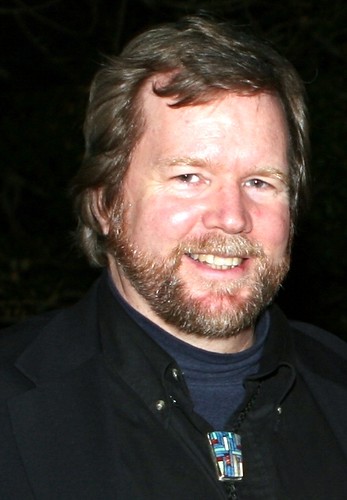In another fascinating post to Ars Technica, Chris Lee discusses the leveraging of scattering to improve resolution in a microscope. A more counterintuitive thing is hard to imagine, but he explains...
(...Seems to me that if the characteristics of the scattering medium could be more predictable and consistent than the sugar-cube example, the diffraction pattern could be pre-determined. If so, instead of an LCD array, a calculated or even printed pattern could be used. Perhaps the whole optical train could be diffractive, basically a modified zone-plate configuration. --S.J.)
While Lee ultimately figures that a factor-of-two is a likelier improvement for resolution, it seems there may be further seductiveness to the technique. Thinking wildly, perhaps objects embedded in scattering media might be observable using some offspring of this research. That could enable applications ranging from oceanic imaging and sensing to in vivo biological imaging. And what does it say about whether scattering is as randomizing as is ordinarily assumed? Are there quantum-entanglement and cryptographic consequences? I've often wondered if we humans have the feeblest grasp of that thing called "randomness"... what we think is random usually isn't at some level, and our proudest efforts to generate randomness without recourse to natural phenomena are really pretty feeble. I wonder if this research may lead to further humbling in that way.
Scattered photons can make for an improved focus
...a few years ago I reported on a very cool experiment, one that allowed researchers to get a nice focusable beam of light through a scattering medium, such as a sugar cube. This work has been continuing, and there are some technical differences in how the experiment works, but theconcepts are still fundamentally the same.
Laser light is shone on a scattering sample, and a tiny fraction of this leaks through, but goes in every direction. To improve the transmission, the researchers place a liquid crystal matrix between the laser and the sample. They modulate the settings on each pixel of the liquid crystal, varying the amount of light transmitted and the effective thickness of each pixel.
Before the liquid crystal, the light beam is a nice smooth thing: the crests, called phase-fronts, of the electromagnetic waves form smooth curves across the profile of the laser beam, as does the intensity of the light. After the liquid crystal, the beam is a complete mess, with the phase-fronts forming some jagged pattern.
It just so happens that the phase-fronts can be chosen so that they exactly compensate for the presence of the scattering sample. This allows some small fraction of the light to pass unhindered through the sample, as if neither the liquid crystal or the sample were there.
Unfortunately, you never really know in advance what the phase-fronts need to look like in order to compensate for the scattering. So you place a CCD camera just after the sample, and then adjust the LCD pixels until you get as bright a dot as possible on the camera sensor. It turns out that this is easy—you just need to take each liquid crystal pixel and adjust it until maximum brightness is achieved. No iteration is needed.
(...Seems to me that if the characteristics of the scattering medium could be more predictable and consistent than the sugar-cube example, the diffraction pattern could be pre-determined. If so, instead of an LCD array, a calculated or even printed pattern could be used. Perhaps the whole optical train could be diffractive, basically a modified zone-plate configuration. --S.J.)
This approach is quite flexible, because it turns out that you can turn the scattering sample into a lens. Just adjust the liquid crystal pixels until the smallest, brightest dot possible turns up, and you have a lens with a focal distance equal to that of the distance between the sample and the camera.
You can also use this technique to improve the resolution of an imaging system, a technique called structured illumination microscopy. Basically, you distort the phase-fronts so that you get multiple sharp points or lines of focus. Each point of focus is, at best, a factor of two better than achievable with ordinary light. But, a factor of two is better than a poke in the eye with a sharp stick, so we'll take it.
What the researchers in the Nature Photonics paper report is an example of structured illumination microscopy, but they claim a factor of ten improvement over the diffraction limit....
While Lee ultimately figures that a factor-of-two is a likelier improvement for resolution, it seems there may be further seductiveness to the technique. Thinking wildly, perhaps objects embedded in scattering media might be observable using some offspring of this research. That could enable applications ranging from oceanic imaging and sensing to in vivo biological imaging. And what does it say about whether scattering is as randomizing as is ordinarily assumed? Are there quantum-entanglement and cryptographic consequences? I've often wondered if we humans have the feeblest grasp of that thing called "randomness"... what we think is random usually isn't at some level, and our proudest efforts to generate randomness without recourse to natural phenomena are really pretty feeble. I wonder if this research may lead to further humbling in that way.

No comments:
Post a Comment